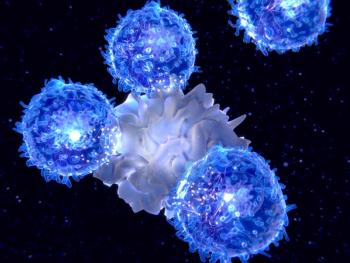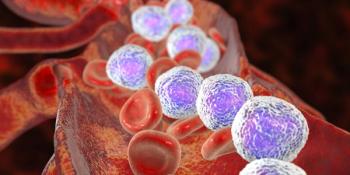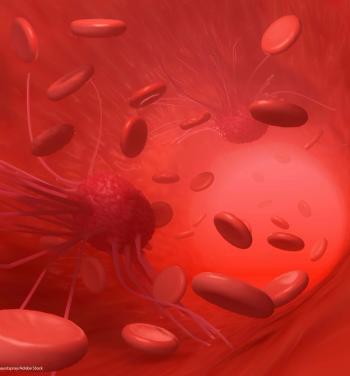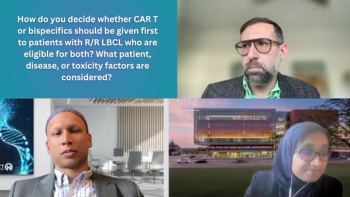
Lymphoma Survivors After Transplant Still At Risk for Late Mortality
Two-year survivors with relapsed Hodgkin lymphoma or diffuse large B-cell lymphoma after transplant had an excess late mortality risk vs the general population.
Patients with relapsed classic Hodgkin lymphoma or diffuse large B-cell lymphoma (DLBCL) who survived at least 2 years progression-free after autologous hematopoietic cell transplantation (auto-HCT) had generally favorable outcomes, but did have an excess late mortality risk compared with the general population, and experienced some late complications. The study was
“Our results affirm the need to build therapies to augment the efficacy of auto-HCT and to treat relapse after auto-HCT,” wrote Regina M. Myers, MD, of the Children’s Hospital of Philadelphia, and colleagues. “As outcomes continue to improve, our study highlights the importance of close, systematic follow-up of auto-HCT patients to screen for and treat late effects.”
High-dose chemotherapy followed by auto-HCT is the standard of care for relapsed classic Hodgkin lymphoma and DLBCL. Treatment failure due to relapse or progression commonly occurs within the first 2 years of the procedure, but little is known about the long-term outcomes of patients who survive progression-free beyond 2 years.
In this study, Myers and colleagues analyzed data from 1,617 patients who survived 2 years beyond auto-HCT for classic Hodgkin lymphoma (n = 836) or DLBCL (n = 781) between 1990 and 2008. The median duration of follow-up was about 10 years.
The 5-year overall survival rate was 90% for patients with Hodgkin lymphoma and 89% for patients with DLBCL. Patients with classic Hodgkin lymphoma had an almost 10-fold increased risk for late mortality compared with the general population (standardized mortality ratio [SMR], 9.6), and those with DLBCL had a 3.4-fold higher risk for late mortality (SMR, 3.4).
Relapsed disease accounted for more than 4 in 10 late deaths that occurred in patients with classic Hodgkin lymphoma (44%) and DLBCL (43%).
A multivariate model showed that for patients with classic Hodgkin lymphoma, older age (P < .001), male sex (P = .039), a Karnofsky score of < 90% at time of transplant (P = .011), total body irradiation exposure (P < .001), and a higher number of lines of chemotherapy before transplant (P = .015) were all risk factors for overall mortality. Increased risk for non-relapse mortality was associated with older age (P < .0001), a Karnofsky score < 90% at transplant (P = .011), and total body irradiation exposure (P < .0001). Among patients with DLBCL, only older age (P < .001) and total body irradiation exposure (P = .013) were associated with overall mortality and non-relapse mortality.
At least one late effect was reported in 9% of patients. Only 2% of patients had two or more late effects. The most frequently reported nonmalignant late effects were endocrine impairments, including hypothyroidism (n = 50), diabetes (n = 23), and gonadal dysfunction (n = 16). Second malignant neoplasms were found in 44 patients with classic Hodgkin lymphoma and 61 patients with DLBCL.
“Our results, in combination with prior data, support the need for continued long-term follow-up of patients after auto-HCT to screen for late effects,” the researchers wrote.
Newsletter
Stay up to date on recent advances in the multidisciplinary approach to cancer.



















































































